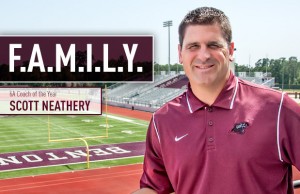Health Update: Preventing Heat-Related Illness

As a high school and college athlete, I know the need to be competitive. Growing up in the south, football was our pastime. If you weren’t playing, you were practicing. For most football players, summer “break” is short lived. Before you know it, you’re back to two-a-days in full pads–and doing it all in the 100 degree temperatures.
Unfortunately, multiple student athletes in Arkansas and across the nation fall victim to the extreme heat each year. With months of triple digit temperatures, it’s important for parents and coaches to keep players safe by understanding when to push and when to stop.
Heat related illness is currently the third leading cause of death in athletes behind cardiac disorders and head and neck trauma. Heat stroke distinguishes itself from the other two causes of death by being entirely preventable by simply recognizing the causes. Athletes can be at risk when exposed to high temperatures for a prolonged period of time, but when combined with dehydration, this leads to failure of the body’s temperature control system.
In many cases, athletes might be unaware they are experiencing early signs of a heat stroke and they will continue practicing. Coaches should periodically check players for the early warning signs of heat illness, which can include nausea, headache, fatigue or weakness, fainting, poor concentration, flushed skin,, light-headedness, loss of muscle coordination, decreased sweating, and vomiting.
Below are eight ways to prevent heat stroke among football players, guidelines that are applicable to every sport and recreational activity.
Hydrate. Not only REhydration, but also PREhydration is crucial! There are two very simple and effective ways to ensure that your body is adequately hydrated. First, weigh yourself before and after activity. For every pound lost during activity you should consume a 20 oz bottle of fluid. Second, keep your pre-activity body weight within 1-2 lbs of your pre-activity body weight from the day before.
Acclimatize to heat gradually. Practices for the first 14 days should be shorter and less intense. Athletes should be encouraged to initiate their own conditioning program several months prior to the beginning of the season. During the hottest weather, practice sessions should be scheduled in cooler parts of the day.
Account for heat and humidity. It has been suggested that if the sum of the temperature and relative humidity are greater than or equal to 160, special precautions must be taken. If the sum is greater than 180, practice and or game cancellation should be strongly considered.
Provide for frequent breaks. Adjust the activity level and provide frequent rest periods during hot weather–at least 15 minutes per hour of practice.
No heavy or wet clothing. Athletes should practice in cooling clothing. Sweat saturated t-shirts should be changed often since they retain heat.
Parent monitoring. Parents should monitor all practices and games, with the responsibility shared on a rotating basis. If a parent observes an unsafe situation developing, he or she should immediately bring it to the attention of the coach.
Identify athletes at greater risk. Some athletes are more susceptible to heat illness than others. Identify and observe closely those at greatest risk of heat illness, including those who are poorly conditioned, overweight, have an acute illness, or have cystic fibrosis, diabetes, or mental retardation.
In heat stroke, every minute counts. When core temperature is very high, body and brain cells begin to die, and rapid cooling is vital. If you suspect that someone has a heat stroke, immediately call 911 or take the person to a hospital. Any delay seeking medical help can be fatal.
Dr. Bailey grew up in Harrison, AR where he played football from an early age. He also played at Harding University in Searcy.









0 comments